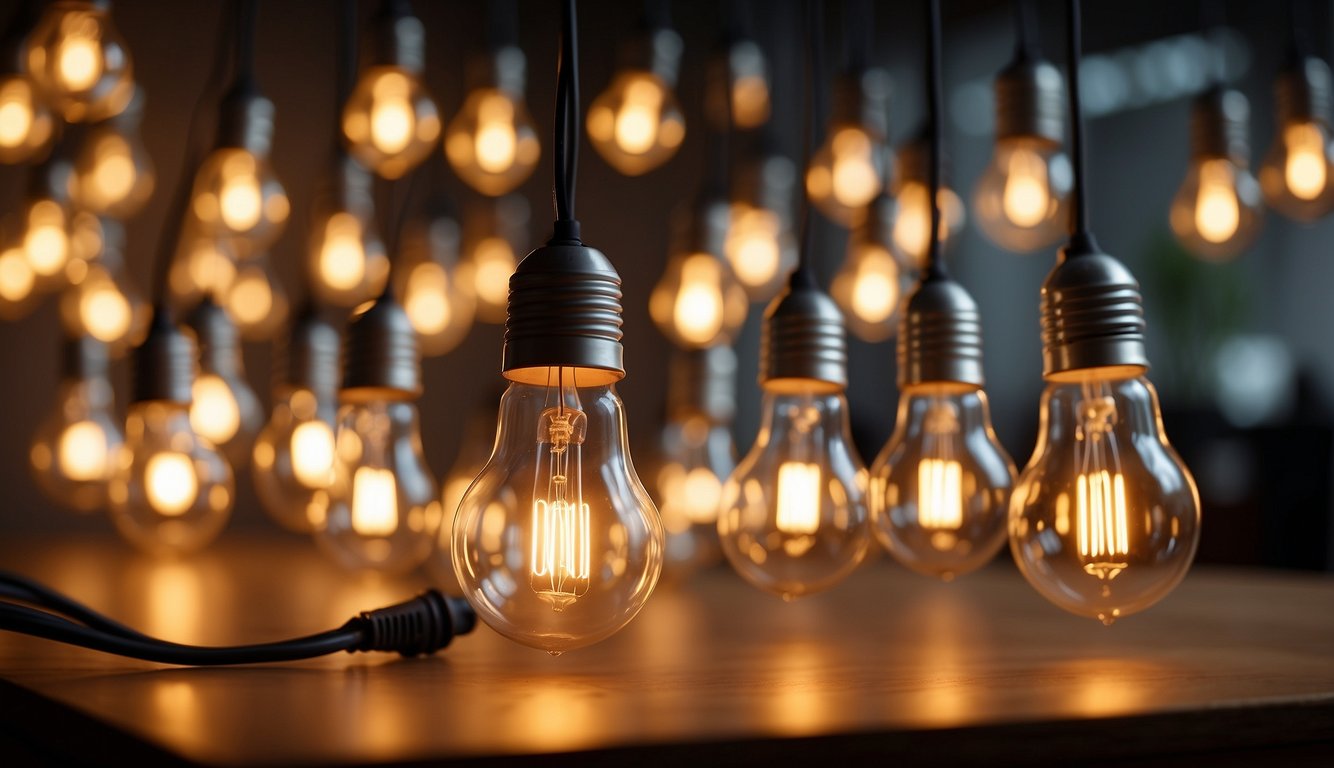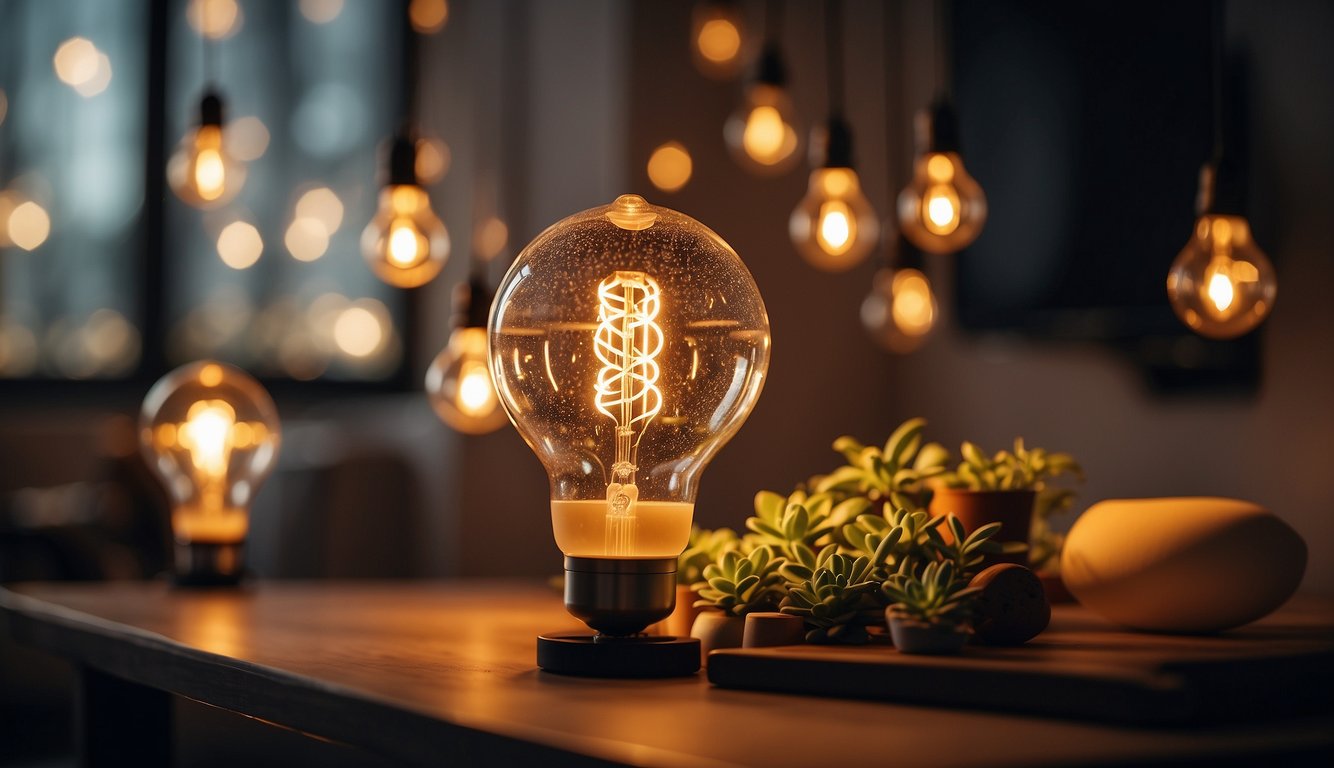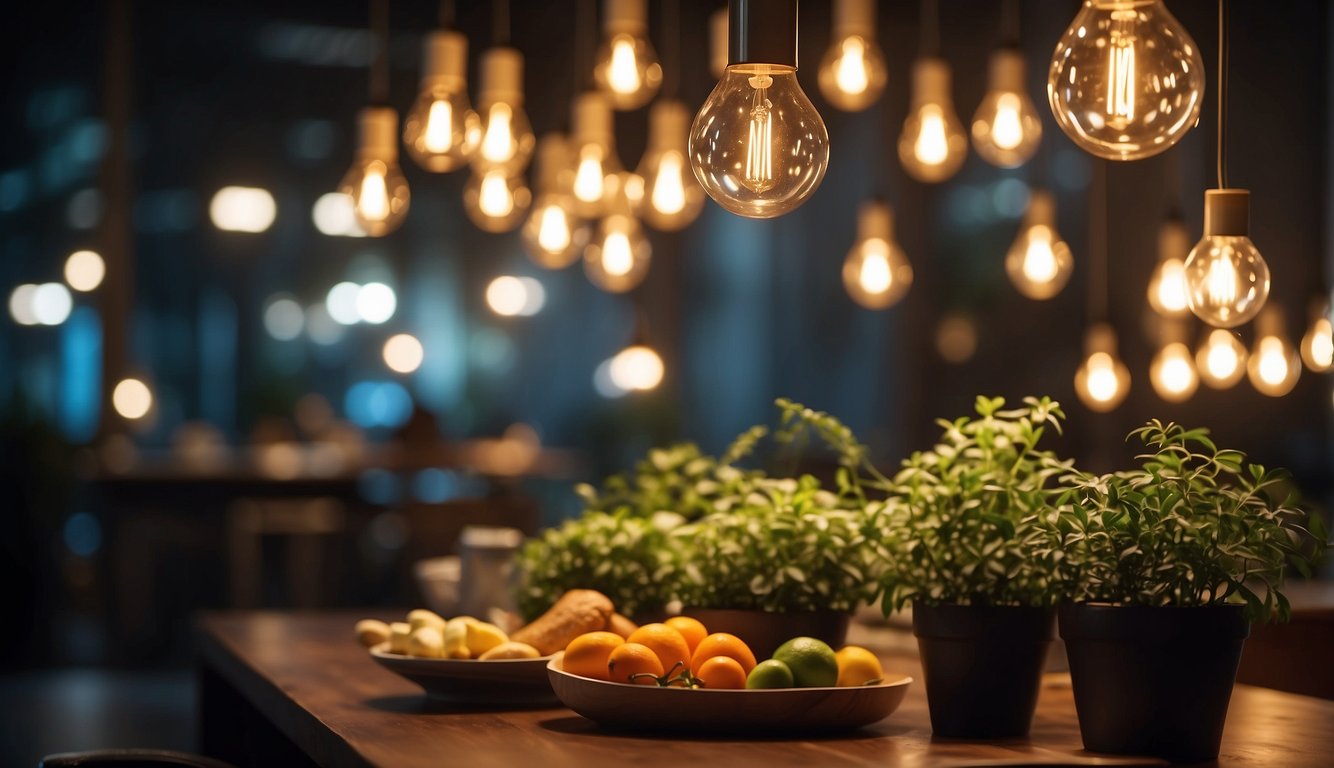When selecting light bulbs for your home, understanding the difference between warm white and soft white options is essential. Warm white light bulbs cast a more yellowish hue, creating an inviting and intimate atmosphere, often used in living rooms and bedrooms where you seek comfort and relaxation. On the other hand, soft white light bulbs emit a more neutral white light and tend to be used in spaces where clarity and crisp visibility are needed, such as kitchens and bathrooms.
Choosing between warm white and soft white light bulbs goes beyond personal preference; it’s about creating the right mood and functionality for each space in your home. Factors such as color temperature, which measures the perceived warmth or coolness of a light source, play a significant role in achieving the desired ambiance. While both types of bulbs are designed to provide a cozy feeling compared to the starkness of cool white bulbs, their subtle differences can significantly impact the look and feel of a room.
Key Takeaways
- Understanding the color temperature is crucial for creating the desired ambiance.
- Warm white bulbs create a cozy atmosphere, ideal for relaxation.
- Soft white bulbs offer neutral lighting, enhancing clarity and visibility.
Understanding Color Temperature
https://www.youtube.com/watch?v=mUEA9iPuOP4&embed=true

When you’re selecting light bulbs, it’s essential to understand how color temperature impacts the mood and functionality of your space.
Kelvin Scale Explained
The Kelvin scale is a numerical representation of light color emitted by a bulb, where the kelvin rating denotes how warm or cool the light appears. Bulbs with lower Kelvin values emit a yellowish light, commonly known as warm white. In contrast, bulbs with higher Kelvin values produce light with blue tones, resulting in what is often referred to as cool white or bright white.
Warm White Vs. Cool White
Warm white bulbs typically have a color temperature between 2,700 and 3,000K, creating a cozy and welcoming atmosphere — reminiscent of traditional incandescent bulbs. On the opposite end, cool white bulbs range from 4,000 to 5,000K, providing a more clinical and energetic feel, which is sometimes preferred in bathrooms or kitchens for better visibility.
Color Temperature in Lighting Design
Your choice in color temperature influences not just the look of your room, but also its functionality. For bedrooms and living areas where a relaxing ambiance is desired, soft white light bulbs, which fall slightly lower on the Kelvin scale, are ideal. If you need clarity and alertness, like in a home office, bright white bulbs might be your best choice as they mimic daylight.
Types of Light Bulbs
When selecting light bulbs, you’ll come across various types, each with unique characteristics and energy efficiencies. Here’s a closer look at the options you have available.
LED Bulbs
LED Bulbs, short for Light Emitting Diodes, are known for their long lifespan and energy efficiency. These bulbs use a semiconductor to convert electricity into light. As a result, they use significantly less energy than traditional incandescent bulbs and can last up to 20 years or more. LED bulbs are available in a range of color temperatures, from the warm glow of soft white to the bright and crisp light of daylight.
Incandescent Bulbs
Incandescent Bulbs are the classic bulbs many grew up with. They produce light by heating a filament wire to a high temperature until it glows. The warm, ambient light they emit often creates a cozy atmosphere in your home. However, these bulbs are less energy efficient compared to LEDs—they convert much of their energy into heat rather than light.
CFLs and Halogen Bulbs
CFLs, or Compact Fluorescent Lamps, offer a longer life and better energy savings than incandescent bulbs, but not as much as LEDs. They work by driving an electric current through a tube containing argon and a small amount of mercury vapor. Halogen bulbs are a type of incandescent bulb that uses a halogen gas to increase light output and efficiency. Both types of bulbs are being phased out in favor of more energy-efficient options.
Choosing Bulbs for Different Rooms
https://www.youtube.com/watch?v=EvXMul_y-XQ&embed=true
When selecting light bulbs for your home, it’s crucial to consider the type of ambiance you want to create in each room. Whether you prefer a cozy, relaxing atmosphere or a bright, energetic space, the right lighting can make all the difference.
Best Bulbs for Bedrooms and Living Rooms
In your bedroom and living room, a calm and warm environment is typically desired. Soft white bulbs are ideal for these areas, providing a soothing glow that mimics the golden hues of sunrise or sunset. Choose bulbs with lower color temperature, around 2,700 Kelvin, to enhance the coziness.
Ideal Lighting for Kitchens and Dining Rooms
Kitchens and dining rooms benefit from brighter, more energizing light. Look for daylight or cool white bulbs, which have a higher color temperature of about 5,000 Kelvin. These mimic natural daylight and promote focus, which can help in food preparation and create a vibrant space for dining.
Optimizing Lighting for Offices and Work Areas
« Light Bulb Too Big for Socket: Finding the Right Fit for Your Fixtures
Light Bulbs Similar to Sunlight: The Top Natural Light Options »
For your office or work area, effective task lighting is key. It’s recommended to use bulbs with a high lumen output and moderate to high color temperature to keep you alert and minimize eye strain. Adjustable desk lamps with LED bulbs are a great option to direct light exactly where you need it.
Bathroom Lighting Considerations
Bathrooms require lighting that is clear and bright for grooming. Look for bulbs that provide a neutral to cool white light, which offer a crisp and accurate color rendering. Over-mirror sconces or vanity lights paired with 100W equivalent LED bulbs ensure no shadows are cast on your face.
Lighting and Ambiance
https://www.youtube.com/watch?v=CHqXqj0HR4o&embed=true
Choosing the right light temperature can transform a space from stark to snug, enhance dining experiences, and draw attention to your favorite decor. It’s important to understand how different lighting shades can influence the ambiance of a room.
Creating a Cozy Atmosphere
For a cozy feel, soft white bulbs are your go-to option. Emitting a warm glow, they mimic the soothing effect of candlelight. These bulbs typically have a color temperature of 2,700 to 3,000 Kelvin, creating a tender and inviting environment perfect for lounge areas or bedrooms where relaxation is key.
Designing an Inviting Dining Experience
Mood lighting is crucial when it’s about dining. Warm white bulbs, ranging from 3,000K to 4,000K, strike a balance between relaxation and sociability. They offer enough brightness to keep the setting inviting and comfortable, yet not so intense as to overwhelm.
Accent Lighting to Enhance Decor
Accent lighting with the correct temperature can enhance the beauty of your decor. Using warmer tones can highlight textures and colors, giving depth and dimension to your space. It’s perfect for showcasing artworks or creating focused lighting in reading nooks. Remember, it’s not just about the brightness but also where you place your light sources to maximize impact.
Lighting for Specific Tasks
https://www.youtube.com/watch?v=DuKJEOE8WPg&embed=true
Choosing the right light for your tasks can enhance your productivity and minimize strain on your eyes. Specific tasks require different lighting solutions for optimal results.
Reading and Productivity Lighting
For reading and productivity, your focus should be on lights that reduce eye strain and provide clear illumination without creating a glare. Cool white lights, which are above 4000 Kelvins, offer bright and crisp lighting which can help to keep you focused and alert. For example, a cool daylight bulb is often recommended because it provides a cleaner, more pure white tone which resembles natural daylight, and can be ideal for reading and detailed work.
Ideally, the light for these activities should mimic daylight as much as possible. For desk lamps or reading lights, aim for bulbs labeled as “daylight” that fall within the 5000K to 6500K color temperature range. This will help create an environment conducive to concentration and efficiency.
Makeup and Detailed Tasks Lighting
When applying makeup or performing tasks that require a keen eye for detail, soft white lighting is preferred because it closely resembles natural light without overwhelming brightness. Soft white bulbs, ranging from 2700K to 3000K, provide a warm and cozy light, which is ideal for tasks like makeup application as it more accurately represents skin tones and colors without creating harsh shadows.
For the best results in precision tasks, combine overhead lighting with task-specific lamps to achieve balanced illumination, reducing shadows and ensuring that every detail is clearly visible. Lights at these temperatures can also make your space feel inviting, which is beneficial when you’re spending long periods focusing on meticulous tasks.
Energy Efficiency and Cost
When you’re in the market for new light bulbs, understanding energy efficiency and cost is crucial. Not only will you save money over time, but you’ll also be doing a favor to the environment by conserving energy.
https://www.youtube.com/watch?v=Ei5vS-g4DTo&embed=true
Comparing Bulb Energy Usage
Incandescent bulbs: Traditionally, these bulbs have used more power for the amount of light they produce. For example, a 60-watt incandescent bulb emits much less light in lumens compared to a 60-watt LED equivalent.
LED bulbs: More energy-efficient, by using LED bulbs, you consume less energy as they can produce the same level of brightness measured in lumens with significantly lower wattage. For instance, an LED bulb can give off the same brightness as a traditional 60W incandescent bulb while only using about 8-12 watts.
Understanding Bulb Lifespan and Price
Incandescent bulb lifespan and price: Cheaper upfront cost, but they tend to have a shorter lifespan, generally lasting around 1,000 hours. This might seem economical, but you have to replace them more often, which can add up in cost and energy use.
LED bulb lifespan and price: While the initial price of an LED light bulb is higher, they boast a much longer lifespan, usually around 25,000 hours or more. This means you’ll purchase fewer bulbs over time and save money on replacement costs and energy bills.
Lighting Fixtures and Accessories
When you’re setting up your home’s lighting, the fixtures and accessories you choose, such as dimmer switches or the lamps themselves, are crucial for creating the right ambiance. They work in unison with your choice of warm or soft light bulbs.
Choosing the Right Dimmer Switches
Picking the right dimmer switches is essential when you want to achieve the perfect lighting level. Some dimmer switches can cause flickering or buzzing with certain types of bulbs, so always check that your dimmer switch is compatible with LED bulbs if that’s what you’re using. Controls should match the load rating of your lighting; for example, incandescent bulbs typically have higher wattage ratings than LEDs.
The Role of Chandeliers and Bedside Lamps
Chandeliers serve both an aesthetic and functional purpose in your home. They act as statement pieces that can disperse soft or warm light evenly in large spaces. Meanwhile, bedside lamps are perfect for their localized convenience, providing a softer light that’s ideal when you’re reading at night or simply need to relax without overwhelming brightness. The right bulb can enhance the functionality of your chandeliers and bedside lamps, turning them from mere fixtures into accessories that complement your home’s design and ambiance.
Smart Lighting Technology
https://www.youtube.com/watch?v=3rAvCXqXuXg&embed=true
When it comes to modernizing your home, smart bulbs play a pivotal role in home automation, offering you both convenience and energy efficiency.
How Smart Bulbs Enhance Home Automation
Smart bulbs are advanced lighting options that allow you to control the ambiance and functionality of your home with ease. By connecting to your home’s Wi-Fi network or via Bluetooth, these bulbs enable you to adjust brightness, change colors, and even set schedules straight from your smartphone or through voice commands with compatible smart assistants.
- Remote Adjustability: You can control your smart bulbs from anywhere using your mobile device, providing the ability to turn lights on or off even when you’re not at home.
- Energy Savings: Many smart bulbs are LED, which are more energy-efficient than traditional bulbs, helping you save on electricity bills.
- Scheduling: Set timers for your smart bulbs to automatically adjust based on the time of day, which is handy for creating natural wake-up routines or simulating presence when you’re away.
- Color Temperature Control: Some smart bulbs are specifically designed to offer different shades of white, from soft white to warm white, enabling you to choose the perfect mood for each room.
By integrating smart bulbs into your home, you’re taking a step towards a more connected, convenient, and efficient lifestyle.
Psychological Effects of Lighting
https://www.youtube.com/watch?v=stDt2QlwWKs&embed=true
The type of lighting you choose for your space not only illuminates your environment but also has a profound impact on your mood and cognitive functions. Let’s explore how different light temperatures might change the way you feel and work.
Influence of Light on Relaxation and Comfort
Opting for warm light can transform your room into a sanctuary of comfort. This cozy hue has been found to create a calming and soothing atmosphere, perfect for areas like bedrooms and living rooms where relaxation is key. Imagine the golden glow of a sunset encapsulated in your light bulb—soft white light, typically measured between 3000K to 4000K, embraces warm-colored interiors and promotes better sleep.
- Warm Light: Relaxation | Comfort
- Enhances wood furniture and earthy tones
- Ideal for creating a restful environment
Lighting and Its Impact on Concentration
When it’s time to focus and increase your productivity, cool lighting steps in. This type of lighting, akin to the crisp, clear light of midday, is known for stimulating alertness and improving concentration. A study has demonstrated that exposure to blue light, commonly found in cool white light sources over 5000K, can make you feel more awake and attentive—a great choice for offices and study areas.
- Cool Light: Productivity | Alertness
- Simulates natural daylight conditions
- Aids in tasks requiring attention to detail
Guidelines for Lighting Placement
Selecting the appropriate lighting for various rooms in your home can greatly enhance the functionality and ambiance. Pay special attention to the color temperature of bulbs and the placement of light fixtures to ensure each space is optimally lit.
Effective Lighting for Dens and Garages
In your den, aim for a cozy atmosphere by using warm white light bulbs that emit a yellowish glow, promoting relaxation. Combine overhead lighting with adjustable floor lamps to allow for flexibility based on the task at hand. For garages, brighter lights like cool or bright white bulbs are preferable for tasks requiring detailed visibility. Consider installing LED shop lights overhead and task lighting around workbenches.
Hallway Lighting and Safety
Your hallways should be illuminated to ensure safe passage at night. Install wall sconces or overhead fixtures every 8 to 10 feet to avoid dark spots. The use of soft white bulbs in these fixtures can create a welcoming glow without being harsh on the eyes. Ensure light switches are accessible at both ends of the hallway.
Laundry Room Lighting Tips
Proper lighting in your laundry room is critical for spotting stains and ensuring your clothing is clean. Overhead bright white bulbs create a light similar to daylight, making it easier to see what you’re washing. Including under-cabinet lighting can also help illuminate dark corners and make sorting laundry less of a chore.




